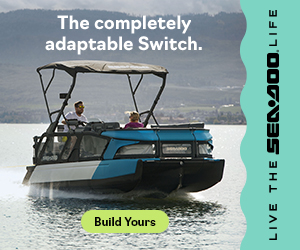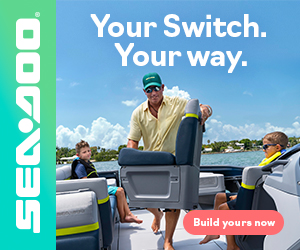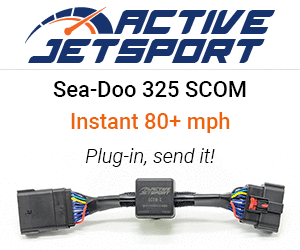The Watercraft Journal: Mark, as the founder of PWCOffshore, many might not know much about you as you aren’t one to hog the spotlight. Tell us a little bit about your background, and how you came to be leader of an offshore racing movement on the Pacific Coast.
Mark Gerner: I’m originally from the Northern Virginia/Washington DC area, moved out to California in 1994 after getting out of the Marine Corps where spent a few years as an Infantry Officer. I’ve been aggressively riding watercraft offshore since 1997. In the mid 2000’s, I took note of the declining participation in the historic Long Beach to Catalina and Back Offshore National Championship race (aka “LB2CAT”); many were just complaining with only a few coming up with viable solutions to get people interested and back on the water racing.

By late 2006, early 2007, I had the idea of creating a team of very capable offshore racers that would also act as advocates for our sport. This included a website that would provide [anyone] with enough information to make [them] comfortable with [riding] offshore and possibly racing.
I bought a domain, spent a few weekends writing and PWCOffshore.com was born. Since then, there have been countless hits on the site and I am pleased that many use it as a resource for offshore riding/racing information. I also own three additional PWC related websites, all are there to assist in getting the word out and promoting offshore racing.
Given the long distances involved in offshore racing, offshore racing [struggles to] engage spectators. Therefore, I created the LB2CAT race coverage video to promote the race. This includes helicopter [footage] from substantial distances offshore; we’ve been producing the LB2CAT race coverage video since 2007 and it’s now being distributed to locations all over the world.
WCJ: Why offshore/endurance/open ocean, when close course is commonly seen as the more popular form of PWC racing?
MG: I think the ocean intimidates most PWC riders/racers. Lets face it, there can be large waves, fog, tankers, wildlife, no shore in sight for miles and a myriad of other potentially daunting elements involved with riding offshore (Just the attraction for me). With education and the use of good judgement, many of theses issues can be managed effectively and risk can be mitigated.
Regarding close course racing, it’s very challenging in other ways. Its like comparing the Baja 1000 to a closed course motocross race at Anaheim Stadium – two different animals. I think part of the attraction of close course racing is that it is a small course close to shore that can be watched up-close; many find that attractive. We are seeing a decline in PWC close course runabout racing and an increase in standup closed course racing. I believe much of this involves the substantially lower operating cost of standup racing versus the cost of contemporary four-stroke PWC racing. Lets face it, new four-stroke PWC’s are very expensive and when they break, it can cost thousands to repair. This is why we created the Manufacturer Stock Class for the LB2CAT. Buy a boat on Saturday, race a 100-percent stock boat on Sunday.
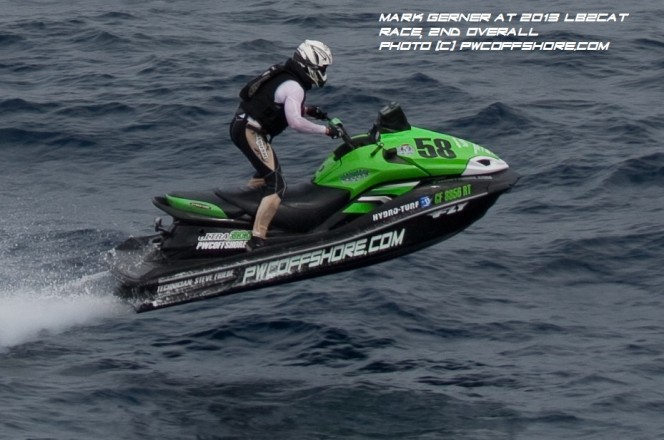
WCJ: The PWCOffshore team recently saw Craig Warner move to the East Coast – although he promises to return to topple Billy Womack’s Long Beach-to-Catalina win record. Are there any “rising stars” that you see coming up the ranks to challenge you and Craig’s competitive skills?
MG: Yes, strictly from a skill perspective, Juan Francisco San Martin of Uruguay will be a contender offshore. I see a great deal of talent out there. Most anyone can win offshore. I’ve said multiple times that anyone can win on any given day. Many things are unpredictable out there; the best rider’s boats break, errors in navigation by strong riders, injuries can present themselves, etc.

WCJ: Speaking of which, you famously had a tremendous “get off” during one LB2CAT aboard a wicked 80mph Sea-Doo, where you severely injured your knee. What are some of the dangers of racing offshore that people need to be aware of?
MG: That 80mph get off was 16 miles offshore at the ’08 LB2CAT, and I injured my “good” knee. My “bad” knee is the one I twisted that day but stayed together. That one has a five inch titanium rod and multiple screws holding it together. I am very thankful and feel very blessed that I was not more seriously injured that day. I’m also glad I hit the water that hard on that day, it’s provided me with perspective and that much more of an understanding of the need for appropriate safety equipment in our sport.
Safety is always first with me and those I ride with, it is always the priority. Dangers out there? Lack of rider or racer preparedness, fog, wildlife (minimal), sea state, large tankers, kelp beds, dehydration, mechanicals, the foolish who tempt fate and ride offshore alone, communications or lack their off, etc. Again, all of these can be and are able to be managed with education and the use of good judgment. It goes back to specific and proactive measures that are implemented by the rider to mitigate risk.
WCJ: Most professional athletes are retired by the time they reach your age (46). Tell us a little of what goes into your training regiment to keep you competitive with younger racers like Craig?
MG: Are you calling me old? [Smiles] I’ve been an athlete all my life. I trained for the Marine Officer Corps, ran marathons and other shorter races, raced mountain bikes, etc. I hit the gym six days a week, take tons of supplements, watch my diet and do an hour of cardio every day.
Physical fitness is a priority with me. Although, I must acknowledge that I noticed a difference in recovery time when I hit 40. Age is just a number. At the risk of sounding rather arrogant, which is not my intent, let’s just say I give the “younger guys” quite a run for their money when they want to come test their steel in the rough stuff. Ask me the same question when I’m 50, OK?
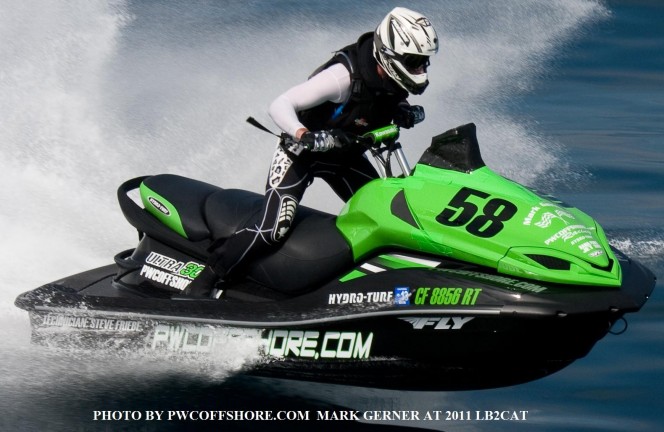
WCJ: From the outside, it would appear that PWCOffshore is almost single-handedly carrying the torch for the Long Beach-to-Catalina Offshore Championship. What do you think it’ll take to excite more people into joining and fill up the starting line with 100 racers?
MG: We have seen an increased interest in the recent past and with the economy appearing to improve, more can afford contemporary performance watercraft. I’d like to see more promoters getting involved in other parts of the country. I encourage all promoters to consider an offshore segment in their race calendars. I’m happy to help, just contact me and I’ll do all I can.

WCJ: You’ve competed on several different brands of PWC, but have become one of the outward supporters of the Kawasaki Ultra platform. What is it about the Kawasaki that makes it – in your opinion – so superior to other skis in the market today?
MG: The Ultra hull, power and fairly heavy weight. That deep-V hull is unsurpassed for offshore and has resulted in multiple offshore and endurance championships. The large pump and aggressive top loader intake grate powered by over 300 horsepower, all those elements together have made this craft the dominant force for offshore. For now, nothing even comes close to the Ultra for offshore riding or racing. That’s why I’m on it.
WCJ: Besides the race team, what are some of the other goals that you have in mind for PWCOffshore.com?
MG: PWCOffshore.com CORE Racing is dominating offshore racing in the US. In addition to Uruguay, we are evaluating expansion opportunities for the club in Europe and elsewhere. Again, inclusion in this club is not just about being a stellar offshore racer, its also about being a good ambassador for the sport. This is very hard to find. We intend to continue to make the DVD better. We have a culture of continuous improvement and strive to get better every day in everything we do. Much of that revolves around keeping an open mind and trying learn something new every time we ride. I don’t care who you are or how much experience you have, you are never done learning.
WCJ: OK, here’s your chance for any gratuitous shout outs or people you want to thank:
MG: I thank anyone in the military who has been injured in combat and/or has made the ultimate sacrifice, giving their life for our country to allow us to go out and do the things we all do on a daily basis in relative safety. Thank you. My peers in Club PWCOffshore.com – they have been vetted and are all quality people and racers, Glen and Bill from R&D Racing Products, Hydro-Turf, FLY Racing, the PWCOffshore.com Pit Crew, Ross Wallach for continuing to promote the LB2CAT, Mike Follmer for his leadership of the Mark Hahn 300 Race and everyone else who is an advocate for offshore riding and racing. There are too many to mention – they know who they are.






